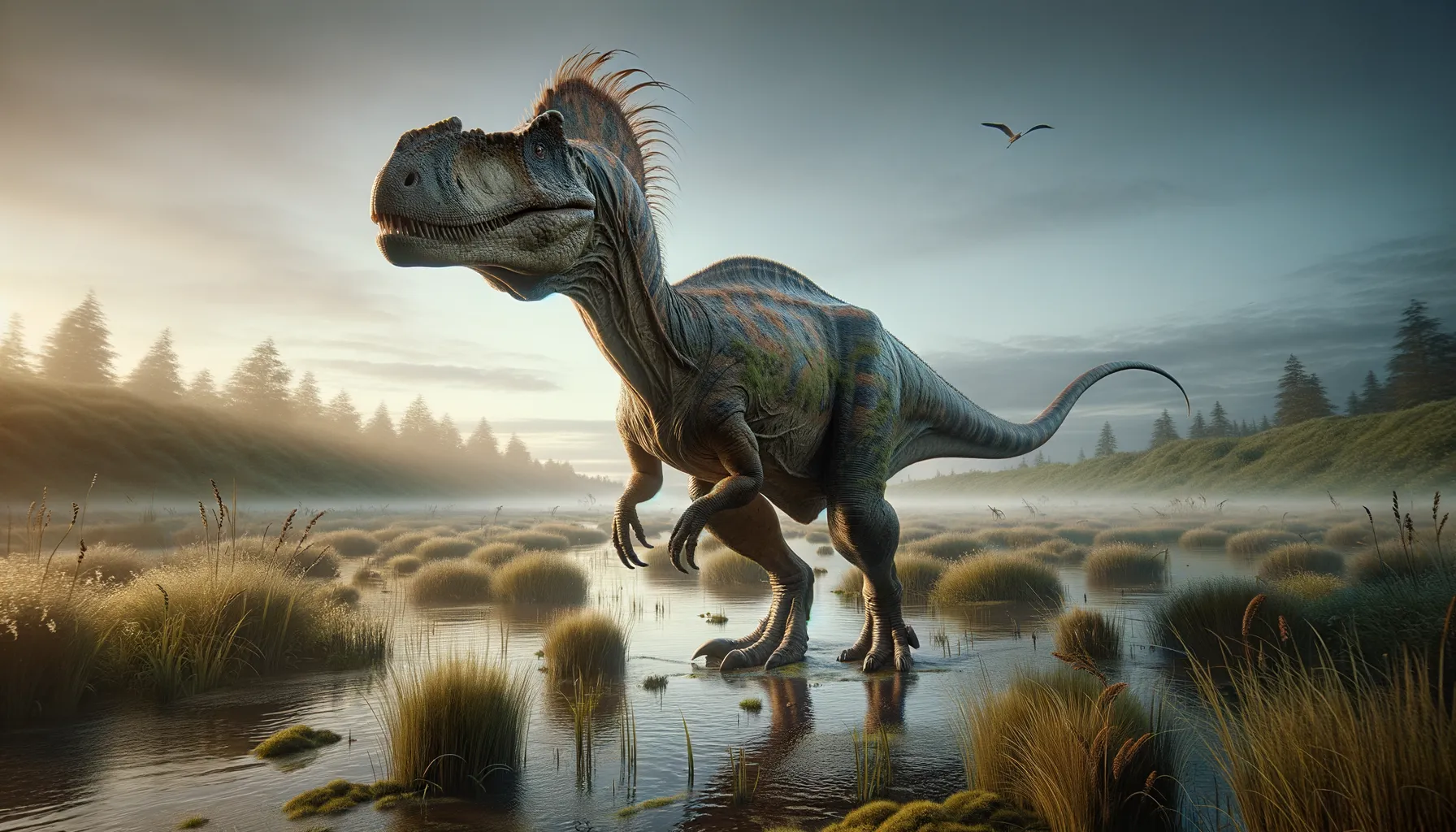
Aralosaurus
A crest-topped giant of ancient Kazakhstan.
Period
Cretaceous
Length
Approximately 8 to 10 meters long.
Height
Stood roughly 4 meters tall.
Weight
About 3 to 4 tons.
Aralosaurus was a herbivorous dinosaur belonging to the hadrosaur family. It thrived during the Late Cretaceous period. Recognized for its duck-billed appearance, Aralosaurus had a distinctive nasal crest, possibly used for communication or display. Its fossils were first unearthed in Kazakhstan, shedding light on the diversity of dinosaur life in that region. Despite its large size, it was a peaceful grazer that roamed prehistoric floodplains.
Diet
Aralosaurus was a herbivore, primarily feeding on plants. It likely consumed a variety of vegetation, including leaves and possibly aquatic plants, using its specialized beak.
Hunting
Being a plant-eater, Aralosaurus did not hunt. It likely browsed for food in groups, taking advantage of abundant foliage in its environment.
Environmental challenges
Aralosaurus faced significant challenges due to environmental changes such as climate shifts and tectonic activity. Its swampy and lush habitat could fluctuate, affecting the availability of food. Furthermore, predation by carnivorous dinosaurs posed a constant threat. Surviving required adaptability to these environmental pressures.
Speed
Likely slow-moving due to its large size.
Lifespan
Lived approximately 70 to 80 years.
First discovery
Discovered in Kazakhstan in the 1950s.
Fun Facts
- Aralosaurus was a duck-billed dinosaur that lived around 83 to 70 million years ago during the Late Cretaceous period.
- Its name means 'Aral lizard,' named after the Aral Sea, near where its fossils were first discovered in Kazakhstan.
- Aralosaurus belonged to the hadrosaur family, known for their distinctive crests and duck-like bills.
- This dinosaur was a herbivore, meaning it primarily ate plants, and likely traveled in herds for safety and social interaction.
- Aralosaurus had a unique hump-like crest on its head, the purpose of which is still debated by scientists but may have been used for communication.
- It is estimated that Aralosaurus could grow up to 8 meters long, making it quite a large dinosaur.
- While only partial skull fossils have been found, they provide crucial insights into the variety of hadrosaur species that once roamed Asia.
Growth and Development
Aralosaurus, like many dinosaurs, underwent rapid growth in its early years. Juveniles would grow quickly to reach a size that minimized predation. Evidence suggests growth rings in their bones, similar to those in trees, recording seasonal growth patterns. Parental care may have played a role in their early development, providing a safe start for hatchlings.
Habitat
Aralosaurus lived in what is now Central Asia, inhabiting floodplains and coastal areas with abundant plant life. The region's warm, humid climate supported lush vegetation, providing ample food sources. This environment provided a haven for a variety of other dinosaur species, creating a diverse ecosystem.
Interaction with other species
Aralosaurus coexisted with various other dinosaurs, potentially forming mixed-species herds. These interactions could provide mutual protection from predators. As a plant-eater, it did not compete with carnivorous dinosaurs for food. Its presence, along with other herbivores, shaped the vegetation dynamics of its habitat.
Natural lifespan
Aralosaurus lived naturally up to 70-80 years.
Reproduction
Aralosaurus likely reproduced by laying eggs in nests, similar to other hadrosaurids. These nests were probably constructed in communal settings, offering protection through numbers. Parental care was possible, ensuring the young had a better chance of survival. The reproductive strategy emphasized producing multiple offspring due to high risks in juvenile stages.
Social behaviour
Aralosaurus possibly lived in herds, a common trait among hadrosaurids, which offered protection against predators. Herd living would facilitate social interactions, such as communication through vocalizations or displays. Such social structures might help in navigation during migrations or finding new feeding grounds. Their social behavior maintained cohesion and boosted survival odds in challenging environments.
Fossil locations
Fossils of Aralosaurus have been primarily found in Kazakhstan, highlighting its presence in Central Asia. The initial discoveries in the Soviet era marked important contributions to understanding Asian dinosaur fauna. These fossils have provided insight into its anatomy and lifestyle, forming a crucial part of the palaeontological record for Cretaceous dinosaurs.
